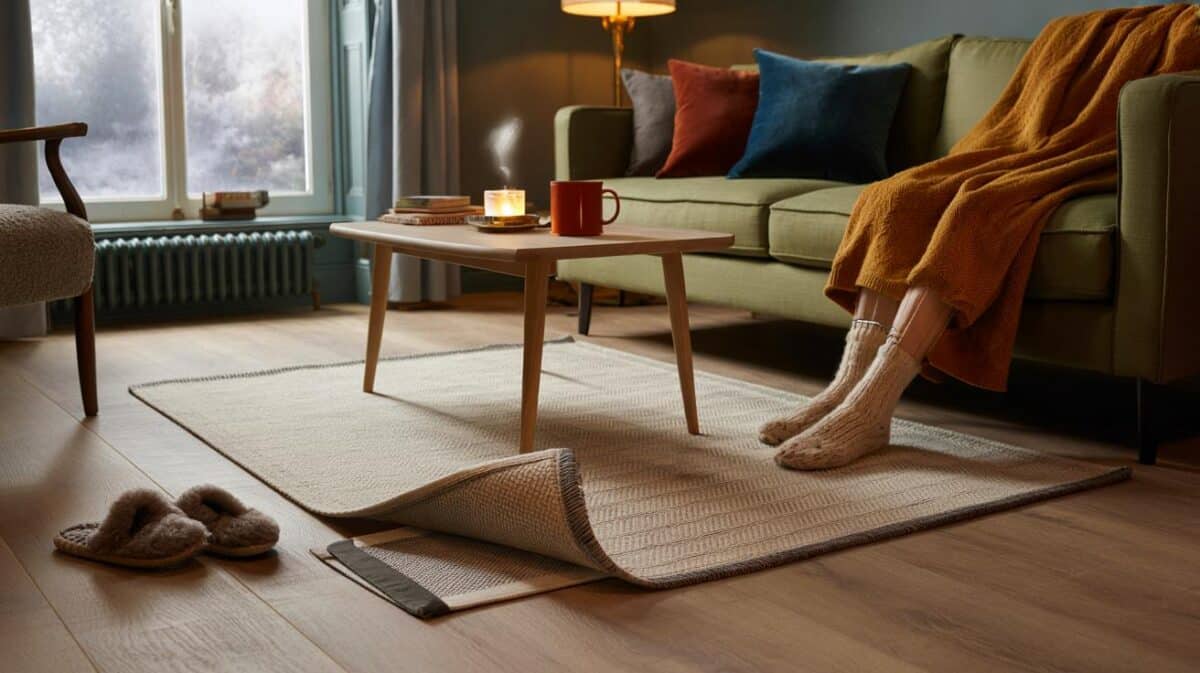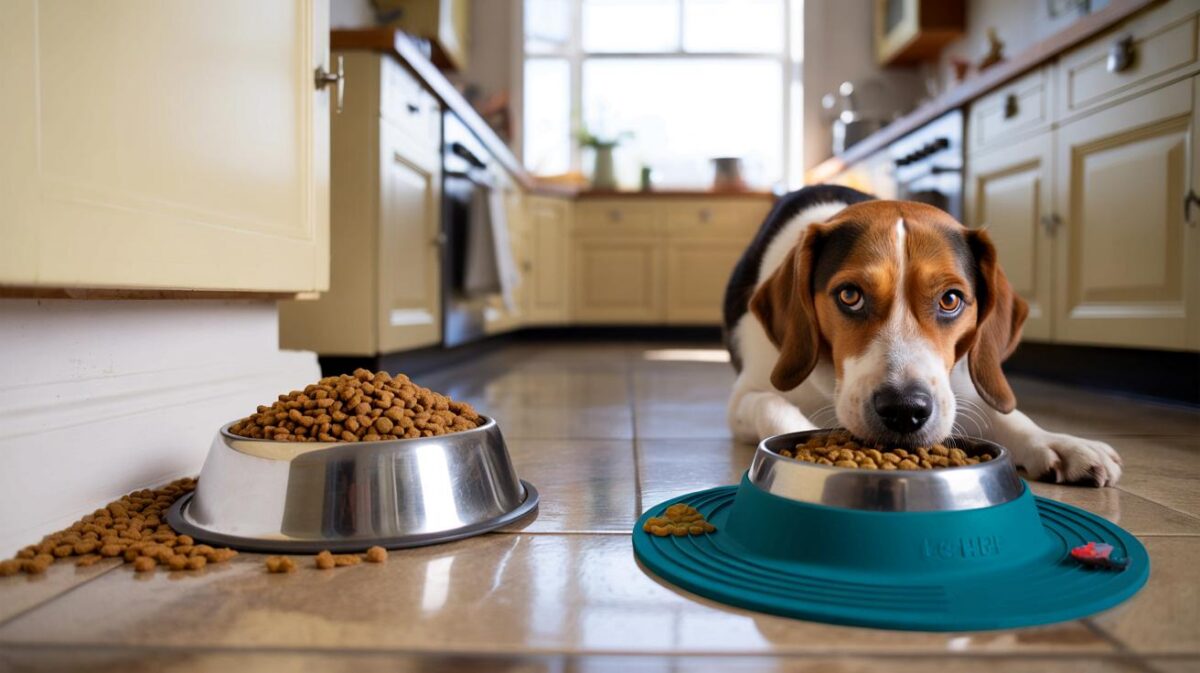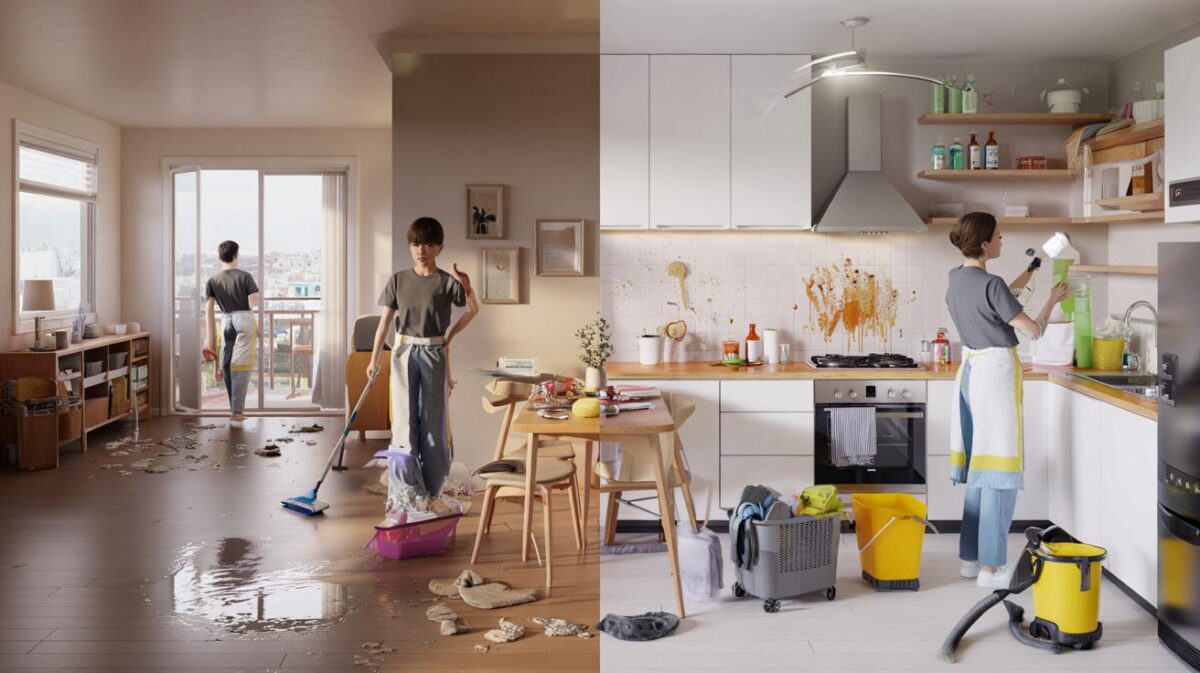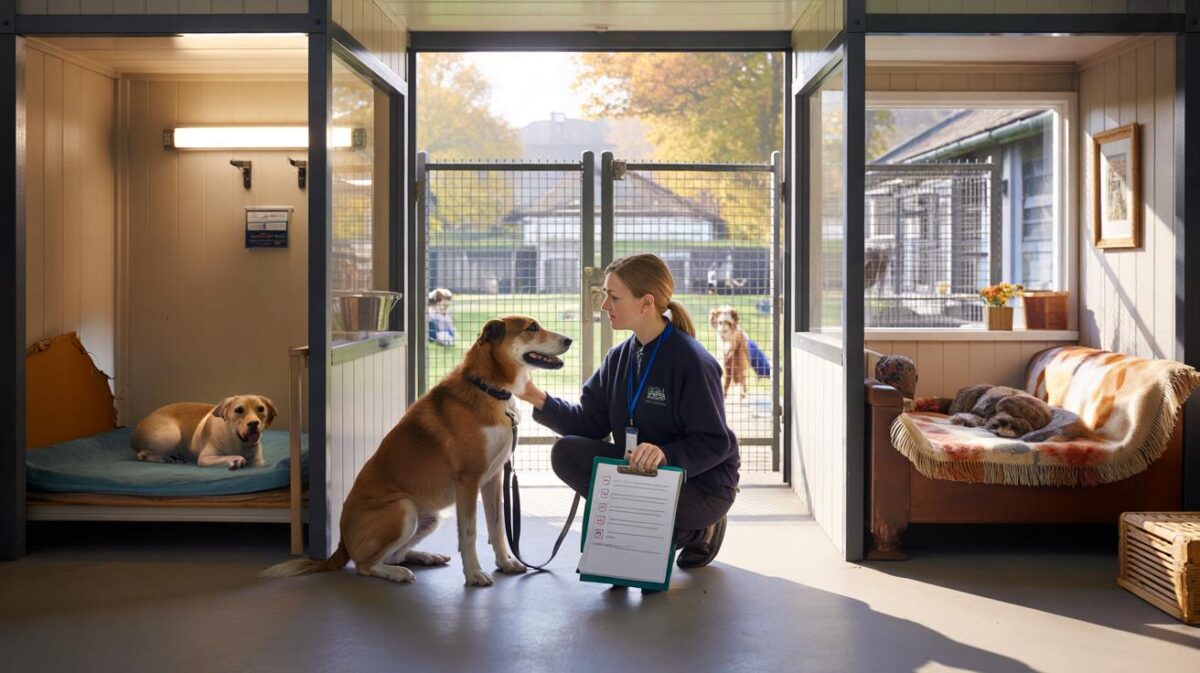Households brace for visits as pets and people jostle for space and patience.
With gatherings back on calendars, behaviour hotlines ring again. Owners want quick fixes. Trainers say the fix exists, and it starts before the bell rings.
Why doorways trigger chaos
Front doors predict big things. New smells. Loud voices. Coats rustling. Dogs learn that the bell means action. Heart rate rises. Muscles prime. If guests greet the dog first, arousal spikes. The cycle repeats with every visit.
Break the chain and you change the greeting. You set the picture. Door equals calm routine, not a rugby scrum.
Four common cues that set dogs off
- The chime or knock that signals people are close.
- Footsteps on the path and keys in the lock.
- The door opening and sudden eye contact with a stranger.
- Guests moving fast, stooping, or waving hands near the face.
Turn the door from a trigger into a cue for quiet. Predictability lowers arousal. Calm behaviour gains access to people.
The 7-step, 10‑minute plan you can start tonight
Set aside a short daily slot. Use tiny wins. Keep rewards handy. Lead on and off as needed. Repeat on quiet days before big visits.
- Step 1: Teach a “parking spot”. Choose a mat two metres from the door. Mark and treat for four stationary paws. Name it “mat”.
- Step 2: Add the bell sound. Play a recording at low volume. Cue “mat”. Feed three small treats on the mat. Silence follows food.
- Step 3: Rehearse the door routine. Knock lightly yourself. Handle the latch. Return to your dog. Pay for staying put.
- Step 4: Increase reality. Open the door 5 cm. Close it. Walk back. Reward the mat hold. Keep sessions under five minutes.
- Step 5: Invite a helper. They step in slowly. No eye contact. No talking. You feed your dog for staying. Release to greet when calm.
- Step 6: Add duration. Ask for 10 seconds of stillness on the mat before the release cue. Build to 30 seconds over a week.
- Step 7: Go live. On real visits, start the routine before guests arrive. Lead the dog to the mat. Treat generously. Release only if breathing and body are soft.
Pay the behaviour you want. Food, praise and access to people work best when your timing is sharp and your criteria are clear.
Desensitisation that actually sticks
Desensitisation fails when leaps are too big. Keep changes small. Go from YouTube bell at volume 2 to 3, not 2 to 8. From door cracked to door half-open, not to a bustling hallway. From one calm friend to two, not to a children’s party.
Short sessions beat marathons. Two minutes, three times a day, builds habits. The nervous system learns more when stress is low. Finish while your dog still wins.
Build a parking spot
That mat acts like a seatbelt. Place it beyond the arc of the door. Keep it grippy. Feed on it often outside of drills, so it feels safe. Add a chew on the mat during visits that last. Chewing slows breathing. Calm grows.
Reward with precision
Mark the exact moment you see soft behaviour. Mouth closed. Ears neutral. Weight evenly spread. Use a quiet “yes” or a click. Deliver the treat to the mat, not to the door. The location of the reward teaches the choice.
A simple playbook for guests
Brief your visitors before they arrive. People set the tone. Clear rules stop mixed messages and frantic leaps.
- Ignore the dog on entry. Look at you, not the dog.
- Stand upright. Hands by sides. No bending or squealing.
- Wait for your cue to greet. A calm dog earns hello.
- Toss a treat to the mat. Keep movement slow and low.
| Trigger | Your action | Guest action |
|---|---|---|
| Bell rings | Say “mat”, feed three treats there | Wait outside, stay quiet |
| Door opens | Stand between dog and doorway | Step in slowly, hands down |
| Dog jumps | Guide back to mat, remove attention | Turn away, no words |
| Dog settles | Release to greet for 3 seconds | Stroke chest once, then pause |
Energy management that pays dividends
A brisk sniff walk before guests arrive reduces jitters. Ten minutes of nose work beats an hour of ball chasing. Hard sprinting can wind dogs up. Sniffing settles them. Offer a stuffed chew in a quiet room if children visit. Use a baby gate to shape space. Management and training belong together.
Reading body language at the threshold
Excited and anxious can look similar. A wagging tail can mean many things. Watch the whole dog. Stiff legs suggest tension. Whale eye hints at worry. Lip licking under no food can show stress. A dog that cannot take food needs distance, not discipline.
For the barker, not the bouncer
Barking buys space. Teach a cue to go fetch a toy when the bell sounds. Holding something lowers volume. Reward quiet seconds with access to another room, not the hall. Build quiet like a muscle.
How long should this take?
Most families report shifts within two weeks of daily practice. Young herding breeds may need longer. Seniors can learn, but sessions should be short. Goal: predictable steps, not perfection. Keep a notebook. Track bell volume, door gap, number of visitors, and your dog’s breathing rate. Data reduces guesswork.
Two weeks of calm rehearsals are cheaper than one smashed phone, one toppled toddler or one bruised grandparent at the door.
When to call in help
Seek professional support if your dog freezes, growls, guards the doorway or has nipped before. A qualified trainer or clinical behaviourist can assess triggers, medical factors and history. Pain, ear issues and gut upset can lower tolerance. A vet check sits well beside a training plan.
Extra angles you can use this season
Noise-proof the threshold. Record your own bell and play it at random low volumes during the day, then feed on the mat. Swap the bell sound on your device for a softer chime for a fortnight while training. Change one variable at a time. Your dog learns faster when the world feels predictable.
Try a calm calculator. If your dog takes five seconds to relax on the mat after the bell today, aim for four tomorrow. Shave one second at a time. Stack criteria only when two days run clean. This micro-goal approach pairs well with family life. Anyone can run a drill between kettle clicks.
Legal and safety notes many owners miss
Injuries at doors often involve falls. Fit non-slip mats in the hall. Ask delivery drivers to leave parcels on a step, not through the gap. Clip a lightweight lead before opening. A lead is a seatbelt, not a tug rope. Use it to guide, not to restrain for long periods.
Think about visitors who feel nervous around dogs. Offer a dog-free space. A calm human helps a dog stay calm. Put care first, then social plans. Your dog can learn to greet politely. Guests can feel welcome and safe. The door can become boring. That is the goal.








